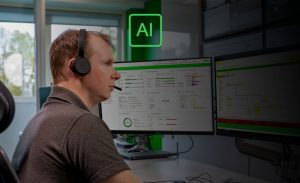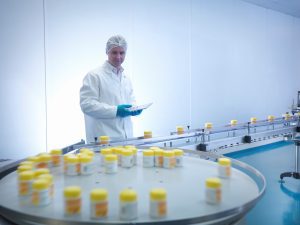
When it comes to reversing the negative effects of climate change, the usual focus is on supply-side transformations enabled by adding renewable energy sources to the energy mix. The energy demand side, by contrast, does not attract as much attention. Moreover, demand-side change is often met with resistance: consumers and organizations are reluctant to the behavioral shifts needed to achieve measurable outcomes.
Although decarbonizing the supply can make an impact, history tells us that the energy transition has always been driven by a change in energy usage. Think about when consumers started to use oil extensively. That happened not because we discovered oil; but because we invented the combustion engine and behaviors followed. We must adopt this same mindset for the current energy transition. In short, we need to change corporate and industrial behaviors to influence effective climate actions.
After all, from the perspective of Schneider Electric, 55 percent of what it takes to solve the energy transition equation will come from energy efficiency, which can affect energy usage itself on a larger scale.
What technologies empower consumers to shift global energy demand?
While individual behavior — including that of industrial consumers — is the ultimate solution to climate change, we cannot wait for change to happen by itself. We are running out of time to reverse climate impacts.
Fortunately, there are available technologies and actions to speed up the behavioral shifts needed for effective climate action. Specifically, Schneider Electric supports the International Energy Agency’s Versailles 10X10 Actions, which are strategies for generating greater energy efficiency. As discussed in “Energy efficiency: Time to act,” they include the following:
- Measure and diagnose: Digitize consumption, connect, and report in-app for outcome-based performance
- Awareness and knowledge: Share practical applications, one-stop-shop advisories, and lighthouse examples
- Skills: Upskill, reskill and increase resources to enable the transition, support Energy Service Company creation
- Design and decide on total cost of ownership: Total cost of ownership (TCO) for designers/architects and decision-making on projects
- Financing gap: Bridge the gap between green capital expenditures (CAPEX) to save brown operating expenditures (OPEX)
- Government as a role model: Many government buildings and infrastructure lead by example
- Regulation: Privilege incentive to stick, outcome-based incentives and, if leveraging coercive technique, then allow a predictable and long enough horizon
- Reinforce the grid: Need transmission lines faster to access renewables, especially in industrial application
- Big stake items with existing tech: Start with the biggest stake items, deploying what we have and starting with the cheapest solutions
- Building sustainability: Leverage existing, available technology for sustainable new builds
Schneider is especially focused on deploying readily available existing technology while the future net-zero energy supply is being designed and built. What that means is maximizing the energy we have available and then creating new sources of cleaner energy such as renewables, and biofuels, for the remaining energy demand.
So instead of waiting for people and industrial consumers to just change their behavior, we are deploying technologies that optimize energy efficiency in factories and process plants, buildings, homes, and data centers. The Schneider Electric headquarters, the Hive, for instance, has been able to reduce energy usage from 300 watts per square meter to 30 watts thanks to the integration of heat pumps instead of gas heating and a building management system that monitors and adjusts energy use based on real-time data insights. These are information signals about their consumption—signals that influence decision-making and, in turn, behavior. The Hive was the first building in the world certified ISO 50001 and the first building in France to be triply certified ISO 14001, a model of energy efficiency.
Likewise, Schneider is decarbonizing our own 150 factories by turning them into smart factories. Our flagship smart factory in Lexington, Kentucky, for example, has incorporated Schneider technologies to boost plant process efficiency and modernize the plant’s control, monitoring, and management processes. Our EcoStruxure™ architecture provided the cloud and edge control technologies needed to enable advanced connectivity, high efficiency, and modern human-machine interfaces for a mobile workforce, reducing energy consumption by 3.5% year-over-year.
Artificial intelligence and changing global energy demand behaviors.
Artificial intelligence is quite the buzzword lately, but it does have pragmatic value for optimizing energy efficiency in the industrial sector. As our CEO Peter Herweck recently mentioned, a district heating utility in Karlovac, Croatia, is using the Schneider Electric district energy system for hydraulic modeling with an AI Load Forecaster module. This AI advancement is empowering Gradska Toplana, which serves more than 8,000 citizens, to forecast heating needs and better optimize the amount of energy needed to heat the district, in turn allowing the district to optimize the operation of chillers, boilers, and energy storage systems. This is a great example of how energy efficiency can enable industrial stakeholders to lessen energy demand.
The power of energy efficiency for managing global energy demand
How powerful is energy efficiency? According to the IEA’s Net Zero Scenario, “Doubling efficiency improvement to above 4% per annum this decade … would lower global energy demand by 190 EJ and CO2 emissions from fuel combustion by almost 11 Gt by 2030.” That amounts to nearly one third of current global energy consumption and emissions.
In fact, the IEA also has reported that global energy efficiency progress reached 2% in 2022. That measurement is based on improvements in primary energy intensity. These 2% represent a progress, but are still far from the yearly, recurrent 4% we need to achieve.
Discover more https://www.se.com/ww/en/insights/sustainability/sustainability-research-institute/back-to-2050-executive-summary.jsp
About the author

Astrid Poupart-Lafarge, Global Segment President Energies & Chemicals
Astrid Poupart-Lafarge is the Schneider Electric Global Segment President for Energies and Chemicals Industries.
Prior to this, Astrid served as Strategic Account Manager as well as Oil & Gas segment leader in French-speaking Africa.
She also has experience in Strategy and Marketing with Schneider Electric in Nigeria. Before Schneider Electric, Astrid was head of business development and M&A in a renewable energy company headquartered in Paris, France.
Astrid has a track record of more than 20 years of experience in strategy, marketing, sales, M&A, in Oil & Gas, utilities and renewable power plants fields. She holds a master’s degree in Engineering from Ecole Centrale Paris.
Astrid Poupart-Lafarge is driving Schneider Electric Energies and Chemicals market towards an energy transition while helping customers to decarbonize their operations and portfolio. She lives in France with her family.




Add a comment